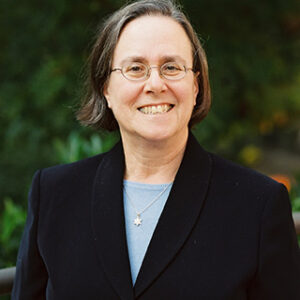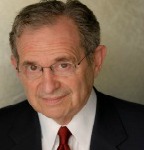
Living Judaism As a Work of Art
May 14, 1994 By Ismar Schorsch | Commentary | Bemidbar | Shavuot
When I was a youngster, Shavuot was the time for confirmation, a ceremony concocted in the nineteenth century along Protestant lines to replace bar-mitzvah and enhance synagogue attendance on the holiday, for Shavuot never enjoyed the popularity of Pesah. But a brief two days, it flits by without the elaborate ritual drama or stirring universal message of Pesah. The synagogue is its primary venue and there is little for us to do at home, except to enjoy the restful interlude with family and friends.
Read More
Universal Service of God
Jun 3, 1995 By Ismar Schorsch | Commentary | Bemidbar
Though the Jerusalem Temple is long gone, time has not erased the threefold division of ancient Israel into Kohanim, Leviim and Yisraelim. Ritual, as it so often does, helps to preserve collective memory. In many synagogues, the first two aliyot to the Torah are still given to a Kohen and a Levi. Yisraelim, who constitute the majority of us, are not called to the Torah until the third aliyah. On Passover the three matzot that bedeck our seder plates are named (from top to bottom) Kohen, Levi and Yisrael. In old cemeteries, a pair of hands symbolic of the priestly benediction often mark the tombstone of a Kohen, while the grave of a Levi whose task was to pour water over the hands of the priests before the recitation of the blessing, is signified by a tilted pitcher.
Read More
Who Counts?
May 30, 1998 By Anne Lapidus Lerner | Commentary | Bemidbar
There was tension in the air that night in 1974 as members of Manhattan’s Tifereth Israel – Town and Village Synagogue filled the social hall, eager to join battle on the critical question of whether or not we would count women in the minyan. For those now accustomed to including women, the practice in about 85% of Conservative synagogues today, it may be hard to imagine the emotion that crackled through the air. Rumors about what different people would say were rife. Everyone knew that the rabbi, Stephen C. Lerner, was in favor of changing the policy. Some said that his own father, a respected member of the shul, disagreed with him. As the rabbi’s wife, I was concerned when my father–in–law raised his hand to speak. “When I was a boy growing up in the Ukraine,” said he with a bit of an accent, “and they asked the local peasants how many people had come to the town meeting, they would say twenty people and ten Jews. I think that we should stop counting that way.” The congregation voted overwhelmingly in favor of including women in the minyan.
Read More
Counting People
Jun 5, 2005 By Ismar Schorsch | Commentary | Bemidbar
The book of Numbers opens on a triumphant note.
Read More
Midrash and Monticello
Jun 3, 2000 By Matthew Berkowitz | Commentary | Bemidbar
A few years ago, my wife and I took a trip to Monticello, Jefferson’s estate in Virginia. And while the splendor of the estate is reflected by a magnificently furnished mansion, extensive library, and extraordinary mountain backdrop, I found myself impressed by something far less grand: the vegetable gardens. They were exquisitely arranged. Each vegetable plant, as well as each species, had its place in the garden. Beefsteak tomatoes were planted in a wholly separate row from the plum tomatoes; hybrid peas blossomed in splendid isolation from the green beans; and red cabbage sprouted at a comfortable distance from its green counterpart. Every vegetable had its proper place and marker, such that each could easily be identified.
Read More
Leadership Through “Contraction”
May 26, 2001 By Ismar Schorsch | Commentary | Bemidbar
The fourth book of the Torah, Numbers, opens eleven months after the revelation at Mount Sinai (Exodus 19:1) and one month after the completion of the Tabernacle (Exodus 40:17). It resumes the story line interrupted by Leviticus, which is almost entirely devoid of narrative content. What follows is a series of gripping events that punctuate and account for an unexpected forty–year trek through the wilderness, culminating on the steppes of Moab east of the Jordan River just prior to Moses’ death. Hence, the Hebrew name of the book Bemidbar–In the Wilderness, comes closer to capturing the sweep of the narrative.
Read More
Bialik’s Radical Subversion
May 22, 2004 By Ismar Schorsch | Commentary | Bemidbar
The overture to the book of Numbers is decidedly upbeat. All appears in order for a quick journey through the wilderness. We are at the start of the fourteenth month since the exodus from Egypt. A month before Moses had erected the Tabernacle, commemorating the first anniversary of Israel’s freedom. Just three months after its redemption, Israel experienced God’s revelation at Mount Sinai. The opening chapters convey an aura of invincibility. With exactly 603,550 fighting men above the age of twenty, Israel is arrayed around the Tabernacle in military formation with four tribes on each side. The ultimate power of this force is spiritual, for the Tabernacle at its center protected by the Levites, is not only the repository of the tablets of the covenant, but also the abode of God on earth. As a shrine, it serves as an earthly microcosm of God’s cosmic dwelling.
Read More
Counting Ourselves As Israel
May 23, 2009 By Leonard A. Sharzer | Commentary | Bemidbar
Sefer Bemidbar, the Book of Numbers, which we begin reading this week, opens with the taking of a census. After the rather arcane matters we have been reading about in recent weeks—the sacrificial cult, laws of purity and impurity, skin eruptions, bodily discharges, and so on—the monotony and repetitiveness of this week’s parashah comes almost as a relief. The chieftains of each tribe are named, and an identical formula is recited, concluding with the number of men over the age of twenty—fighting men—in each tribe. For this is not a census of the entire people, rather it is an accounting of those who will make up an army to cross the desert. The Israelites have just celebrated the first anniversary of their liberation, and they are about to embark on a journey that will last thirty-eight years, although they do not know that at the time of the census. They are forming an army to take the population on what should be a short sojourn to the Promised Land. That they should form an army to cross the desert is not surprising; but, we may ask, why the apparent preoccupation with numbers?
Read More


